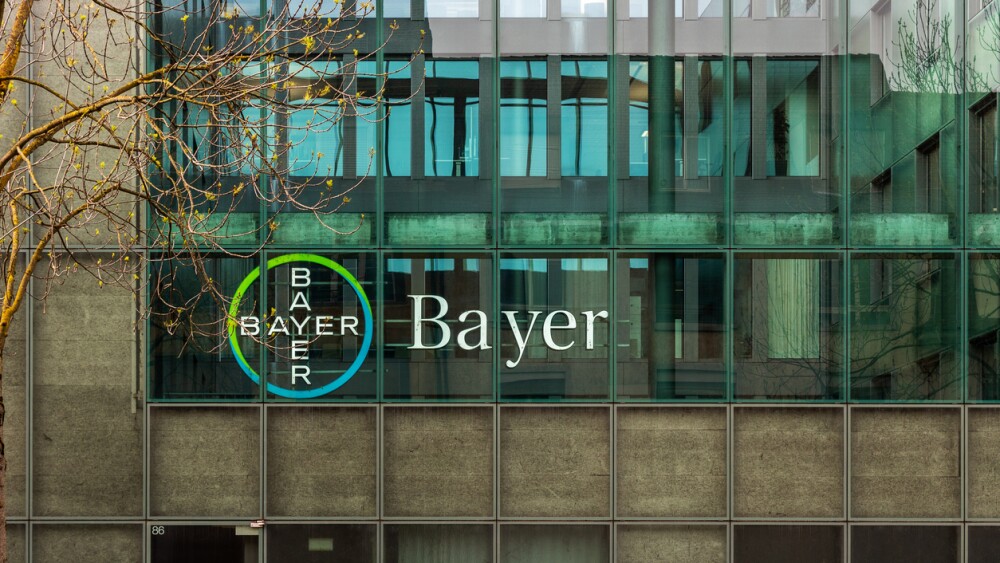Since July, several biotechs have been forced to pivot as previous agreements with the FDA around evidence required for approval were reversed, a phenomenon that, according to experts, could portend a more restrictive regulator.
Last month, uniQure stunned investors and patients alike with the announcement that the FDA had changed its tune on the evidence required for a biologics license application submission for its Huntington’s disease gene therapy. By all accounts, the treatment was on track for market approval based on groundbreaking pivotal three-year data that showed a 75% slowing of the intractable disease. Now, uniQure’s biologics license application, originally planned for early 2026, is up in the air.
UniQure is not alone. This year, several other biotechs, including Capricor Therapeutics and Biohaven, have been similarly forced to reassess their timelines after having their best laid—and FDA-authorized—plans reversed.
On a recent BioSpace webinar, BMO Capital Markets analyst Evan Seigerman spoke of the “uncertainty” biopharma companies are currently facing with regard to the FDA. He spoke specifically about Replimune, which in July was hit with a surprise rejection for RP1, its candidate for advanced melanoma.
“Today, they had one set of guidance from FDA with regard to clinical trial design, or how they could have a unique trial design . . . and then all of a sudden, there’s a 180,” Seigerman said of the company’s experience, “and it throws everything into a tailspin.”
The whiplash at the top of the FDA’s ranks could be playing a role in this instability. Since the beginning of 2025, the Center for Drug Evaluation and Research (CDER) has changed hands four times, while its biologics counterpart CBER has seen three different directors—though one, George Tidmarsh, was only in charge for 10 days during current head Vinay Prasad’s short-lived summer absence.
Graig Suvannavejh, managing director of Equity Research at Mizuho Securities, put this regulatory variability down to philosophical differences between the current regime and the FDA under past leaders like former CBER Director Peter Marks, “who has said to industry, ‘We’re flexible. We understand that there are areas of high medical need—patients need solutions, they need hope—and we’re open for business.”
About today’s FDA, Suvannavejh told BioSpace he believes the agency still wants to be flexible but may “dial up the criteria a bit more where you need to show a more compelling risk/reward profile.”
Here, BioSpace looks at four companies in a newfound state of flux after unexpected pushback from the FDA on products that looked destined for the market.
uniQure
On Sept. 24, uniQure was riding high. The Massachusetts- and Amsterdam–based biotech was gearing up to launch the first-ever genetic treatment for Huntington’s disease after three-year data from a pivotal Phase I/II trial of gene therapy AMT-130 showed 75% slowing of the devastating neurodegenerative disease. Plans were underway to file a biologics license application (BLA) in the first quarter of 2026, and uniQure’s shares soared 248%. Researchers and patients were ecstatic.
Five weeks later, it all came screeching to a halt. Following a pre-BLA meeting, uniQure revealed that the FDA “no longer agrees” that the Phase I/II data for the treatment will be “adequate to provide the primary evidence in support of a BLA submission.” This, despite the company having aligned with the agency on the protocols and statistical analyses used—specifically, comparing AMT-130 to a natural history external control, according to uniQure’s announcement.
The company in its announcement called this a “key shift” from multiple type B meetings held with the FDA over the past year. “Consequently, the timing of the BLA submission for AMT-130 is now unclear.”
Since uniQure’s latest announcement, more than 10,000 Huntington’s patients, families and supporters have signed two petitions calling for the FDA to reconsider.
“For families who have long awaited new treatment options, the FDA’s actions feel like a serious setback and have raised urgent concerns about transparency, consistency, and trust in the regulatory process,” Christina DeGryse, a Huntington’s disease advocate who shared the petitions with BioSpace, wrote in an email.
UniQure expects final minutes from the pre-BLA meeting within 30 days of the Nov. 3 announcement. BioSpace reached out for further comment and was informed that the press release contained the only “information” and “perspective” the company would share prior to that time.
Biohaven
Biohaven also went to the FDA with an application based on a unique trial design for troriluzole, its candidate for spinocerebellar ataxia (SCA). Like Huntington’s, SCA is a genetic, inherited, life-threatening degenerative disease with no approved treatments.
While the NDA was accepted on Feb. 11, the treatment was ultimately rejected earlier this month. In its CRL, the FDA pointed to issues with Biohaven’s Study 206-RWE “that can be inherent to real-world evidence and external control studies, including potential bias, design flaws, lack of pre-specification and unmeasured confounding factors,” according to the company’s November press release announcing the rejection. This was a concern the regulator had apparently communicated in March 2024, when it told the company that “a large and robust treatment effect would be needed” to outweigh the biases associated with a real-world, externally controlled study.
Biohaven argued in the same press release that data showing troriluzole slowed patients’ decline by 50% to 70% versus untreated external comparators and delayed disease progression by 1.5 years to 2.2 years met this bar.
In a Nov. 5 note to investors, William Blair analysts wrote: “The question will now be if the FDA is becoming more restrictive despite sponsors aligning on prior feedback.”
Following the rejection, Biohaven’s stock dropped more than 40%. In turn, the company slashed annual R&D spending by 60% and hit up Wall Street, seeking $150 million. The company has requested a Type A meeting with the FDA to discuss the CRL, according to William Blair.
Replimune
Cancer-focused Replimune has been riding an FDA-themed rollercoaster. In July, the company was hit with a surprise rejection for its advanced melanoma drug, RP1—again, despite apparent alignment with the FDA on trial design.
“The issues highlighted in the CRL were not raised by the agency during the mid- and late-cycle reviews,” CEO Sushil Patel said in a prepared statement along with the company’s press release announcing the rejection of the BLA. “Additionally, we had also aligned on the design of the confirmatory study.”
For Replimune, this apparent regulatory reversal has “been quite a flashpoint,” said Seigerman, who covers the company.
He and his colleagues at BMO Capital Markets initially suspected that the “final hour shake up” could be the doing of Prasad, who they wrote in a July 22 note, “has previously been critical of the approvability of uncontrolled data.” But it was later revealed by multiple media outlets that Oncology Center of Excellence director—and now CDER head—Richard Pazdur had intervened in the decision.
CBER mishandled the RP1 review from the beginning, an anonymous FDA official told STAT News, prompting Pazdur and his team to get involved. Pazdur’s team had raised questions about RP1’s efficacy, according to STAT.
In September, following a Type A meeting with the FDA, Replimune issued an ominous press release in which it said that a path forward for RP1 under the accelerated approval pathway “has not been determined.” The revelation caused a nearly 40% crash in the biotech’s stock price. But just when it seemed all hope was lost, the company announced that the FDA had accepted a resubmission for the drug in advanced melanoma. Replimune’s shares soared by around 93% to $8.69 apiece.
Capricor Therapeutics
San Diego–based Capricor may have been the first canary for this trend. On July 11, the biotech received a CRL for its cell therapy deramiocel, in development for cardiomyopathy associated with Duchenne muscular dystrophy.
In what has since become a familiar refrain, CEO Linda Marbán said during the company’s second-quarter earnings call in August that the rejection “was unexpected given the trajectory of positive interactions” with the FDA.
“We believe we consistently met the agency’s expectations throughout the review process,” Marbán said during the same call.
Craig McDonald, director of the MDA Neuromuscular Disease Clinics at UC Davis and lead investigator on Capricor’s HOPE-2 and HOPE-3 trials, struck a similar note in an interview with BioSpace in July. “The previous leadership in the FDA really found the data quite compelling and encouraged the BLA submission,” he said.
During Capricor’s pre-BLA meeting in August 2024, the biotech requested to switch the primary efficacy endpoint of its Phase III HOPE-3 trial to left ventricular ejection fraction (LVEF), Marbán told investors on the Q2 call. The goal had previously been a change from baseline in upper limb function. The FDA instead encouraged Capricor to submit its application based on currently available data from the Phase II HOPE-2 trial and HOPE-2 open-label extension (OLE) trials matched to an external natural history comparator.
A topline readout from HOPE-3 is expected “in the coming weeks,” a company spokesperson told BioSpace by email. Capricor plans to resubmit the BLA for deramiocel “pending the results” of this readout . . . “leveraging the data in support of its application for approval,” according to its third quarter update.








